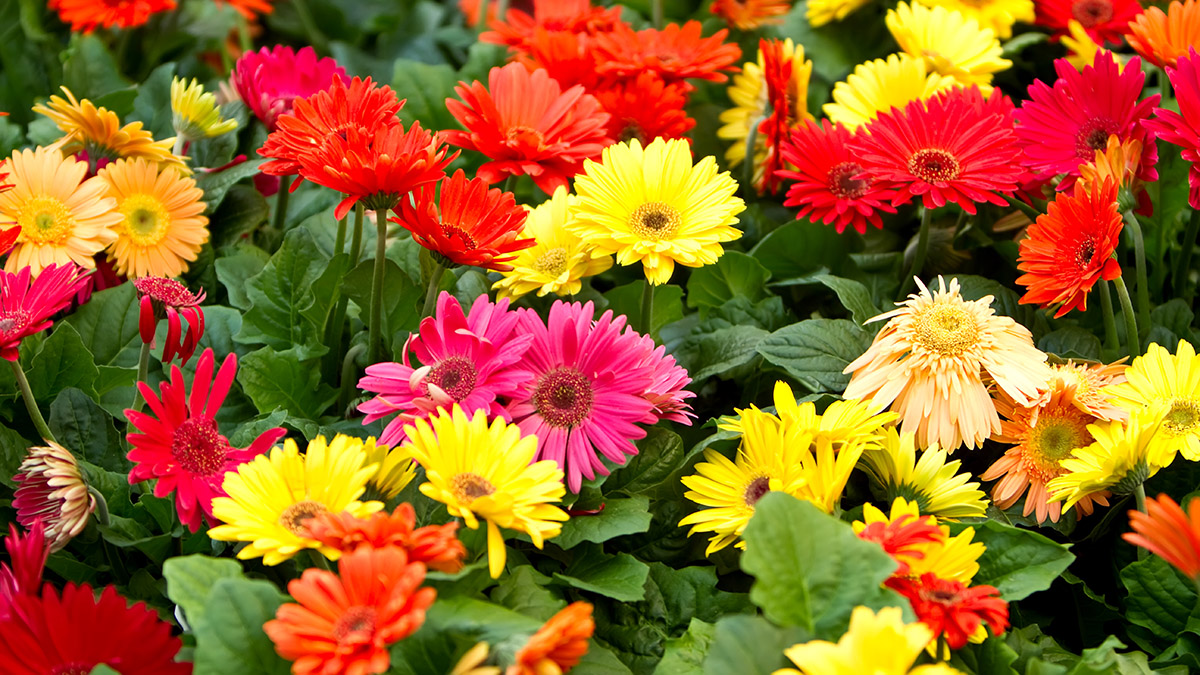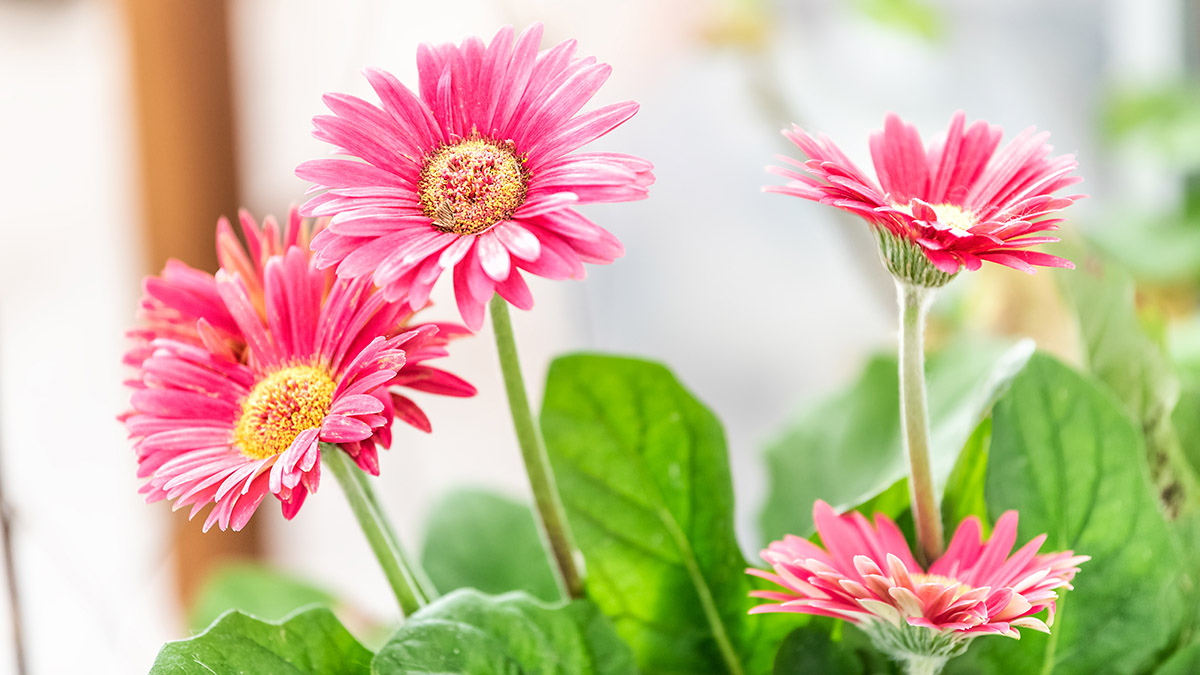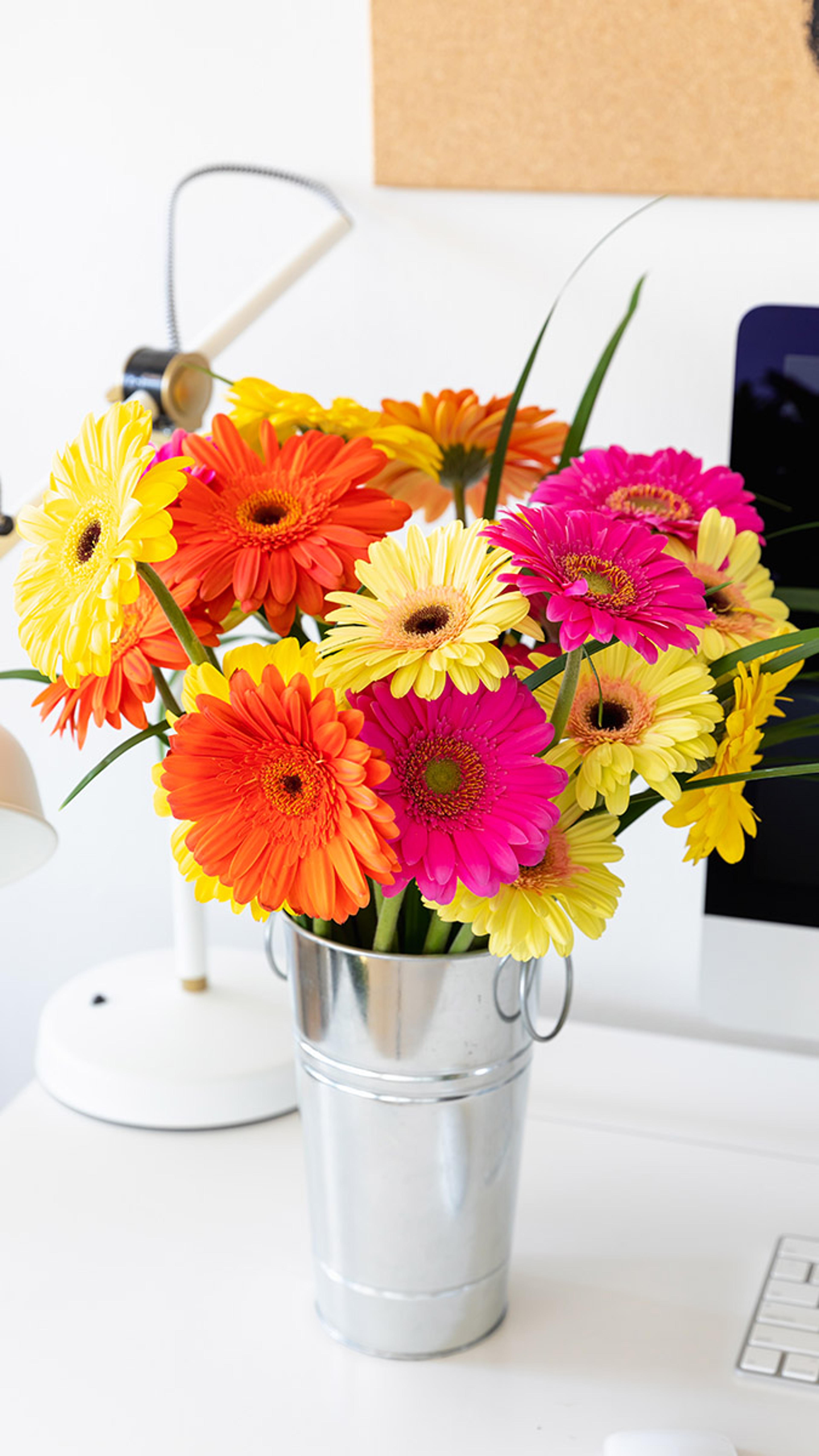A Comprehensive Guide to Caring for Gerbera Daisies
These cheerful blooms radiate joy wherever they go — as long as you care for them properly.
Feb 13, 2024
Are you looking to add a burst of color and beauty to your garden or home? Then consider bringing Gerbera daisies into your life. With its vibrant petals and cheerful appearance, this popular flower is a favorite among gardeners and florists alike.

However, to keep your Gerbera daisies thriving and blooming, proper care is essential. Let's delve into all aspects of Gerbera daisy care — from planting and watering to pest control and propagation - so that you can enjoy the beauty of these cheerful flowers all year round.
Origin and significance of Gerbera daisies
Originating from the sunny climes of South Africa, Gerbera daisies were named as an homage to Traugott Gerber, a German naturalist and confidante of the revered Swedish botanist Carolus Linnaeus.
In terms of symbolism, Gerbera daisies, with their vivid hues and symmetrical petals, communicate cheerfulness, purity, and innocence. In Roman mythology, the Gerbera daisy is connected to the goddess of dawn, Aurora, and, thus, symbolizes the hope and promise of a new day.
Ideal growing conditions for Gerbera daisies
Gerbera daisies need ample sunlight, preferably a full six hours worth. They do, however, appreciate a bit of shade in the afternoon, when the sun's rays can be harsh and potentially damage their foliage.

Gerbera daisies have a slight preference for well-drained soil that leans toward the acidic side, with an optimal pH range between 5.5 and 6.5.
These flowers thrive in warmth, making them a great choice for those living in warmer climates. (In the United States, for instance, they do best in USDA hardiness zones 8 through 11.) If you're growing them indoors, try to keep the temperature between 65 and 75 degrees Fahrenheit, a range that mimics the conditions of their native habitat.
How to plant Gerbera daisies
Plant Gerbera daisies 12 to 18 inches apart from one another, giving them enough room to spread their leaves and stretch their roots. When planting, make sure the crown of the daisy is visible above the soil surface. This will ensure that the base of the plant stays dry and free from rot, and your daisies remain perky and vibrant.
If you are container gardening, it's imperative to use pots with good drainage to prevent the plants from getting waterlogged. Too much water can drown the roots, causing plant distress.
Watering and fertilizing tips
Watering your Gerbera daisies is all about balance and timing. You want to drench the soil thoroughly during watering, but then let it dry out before the next watering session. This prevents over-hydration, a common mistake that can lead to root and crown rot.
Regarding fertilizing, at the time of planting, use a slow-release, balanced fertilizer to give your daisies a healthy start. After that, continue this ritual every six weeks during the growing season to provide your gerbera daisies with the necessary nutrients they need to thrive.
Pruning and deadheading
Pruning your Gerbera daisies is essential. Gently remove lower leaves and old flower stalks with pruning shears to make way for a new flush of growth and blooms, and to keep your plants looking fresh and lively. This also helps manage the size of your plant, preventing it from taking over other plants in your garden.
Deadhead any spent flowers, wilted petals, or browning leaves to ensure continuous blooming and minimize the risk of pests and diseases. To do this, simply follow the stem of the browning leaf or petal down to the base of the plant and make your cut there.
Common Gerbera daisy pests and diseases
Critters that might find your daisies appetizing include aphids, thrips, and spider mites. An effective tool against these pests is insecticidal soap. Alternatively, consider introducing natural predators, such as ladybugs, into your garden. You can buy ladybugs at most garden stores.
Gerbera daisies can also face challenges like powdery mildew and leaf spots, which can mar the beauty of your plants and hinder their growth. You can ward off these diseases by sticking to the watering routine laid out above. This will prevent an overly moist environment that diseases love. Similarly, ensuring proper air circulation around your plants can deter these diseases.
Enjoying Gerbera daisies in your home

Gerbera daisies are not just a delight to grow but also make splendid additions to any indoor space. Having them in your home adds an infectious cheerfulness, making them the perfect decor for any room. Their vivid colors can be a conversation starter or simply an accent piece that breathes life into a space.
These flowers also make a great gift. Handing a bunch of these vibrant blooms to a dear friend, beloved family member, or significant other is like sharing the warmth of a sunny day with them.
So, go ahead and cut a few stems — just make sure to do it in the early morning or late evening, when the flowers are well-hydrated and at their freshest. Put them in a vase, change the water every few days, and, just like that, you've added instant cheer to your home.








